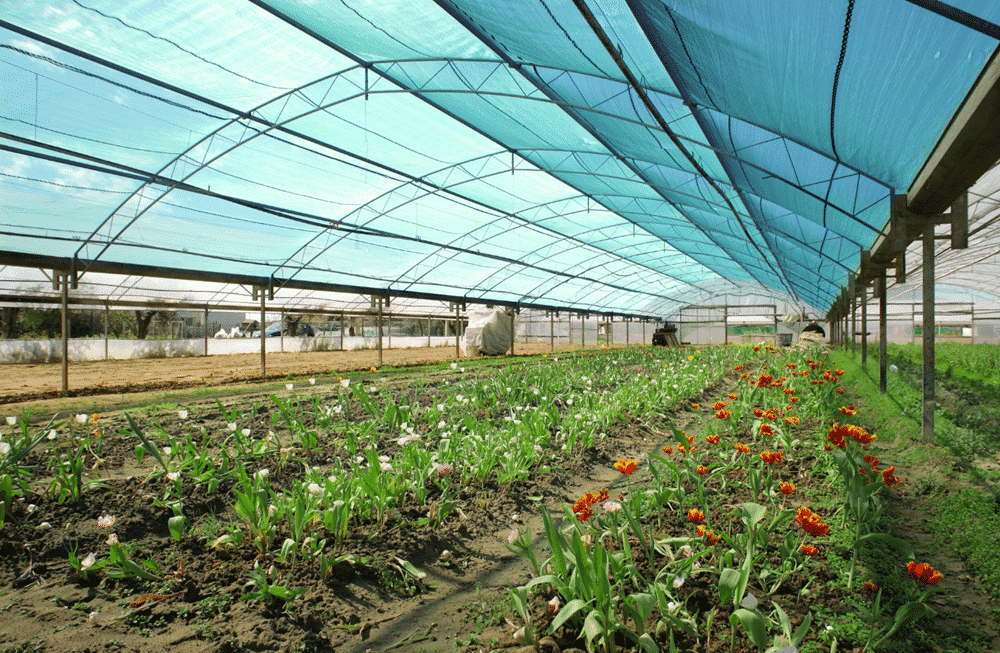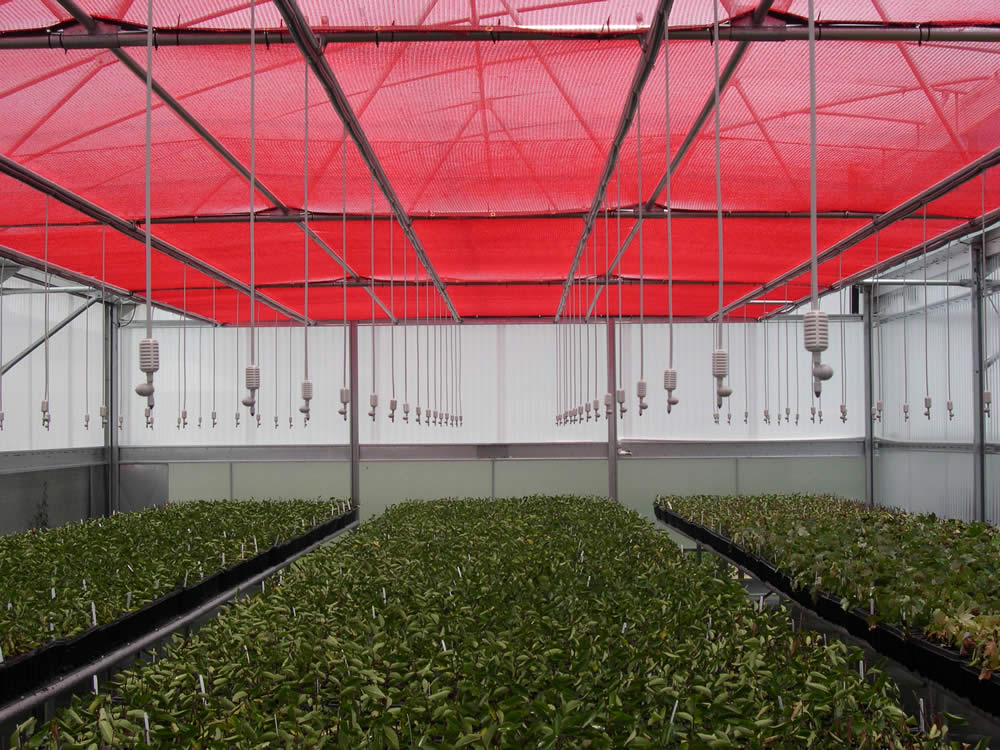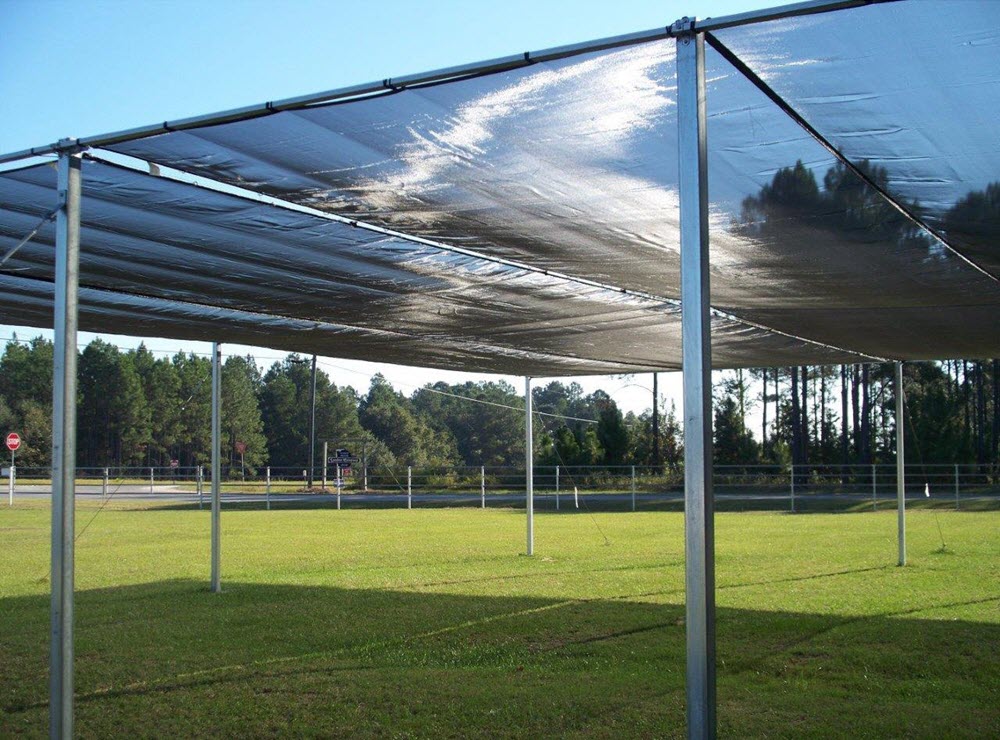© 2020 Hefei Better Technology Co., Ltd. Todos os direitos reservados.Mapa do site Projetado por iwonder.cn
Tel
086-551-6381 6373
O email
In hot summer months it is vital to protect the greenhouse structure from overheating. Apart from greenhouse ventilation, shading also reduces the temperature inside the greenhouse by minimizing the amount of sunlight passing through.
When choosing a shade cloth you need to pay attention to percentage and color. Shade cloth is made of UV resistant material (woven or knitted) and scatters most of UV light. Although it scatters the light, some of it can still be transferred to heat. Why? It depends on the color of shade cloth.

What Is The Best Shade Cloth Color?
Shade cloths come in a variety of colors. The most widely available options are green and black. Other colors include white, red and blue. There is also silver color shade cloth known as Aluminet which is made of aluminized fabric.
Shade cloth not only reduces heat but also diffuses light. Therefore, the color of shade cloth directly affects the plant growth. So, apart from shade cloth percentage you also need to consider what color shade cloth to get to meet specific plant needs.
Lighter shade cloth colors reflect sun’s heat from greenhouse structure. When choosing a color of shade cloth you need to make sure that it scatters the most of the light but does not alter the spectrum of the light. Depending on the type of the plant, stage of cultivation and photoperiod required, plant will need a light with a specific spectrum range.
For example, during growing and maturing phases plants need shorter and warmer wavelengths that are in blue spectrum. When plants are flowering and producing fruits, they need longer and cooler wavelengths that are in red and orange spectrum.
Blue and red shade cloth colors benefit specific plants at different growth stages because they filter different wavelengths of light. Red shade cloth reduces the spectrum of blue, green and yellow light and increases the red spectrum.
Red shade cloth is useful in flowering stage because it promotes early blooming. Moreover, leaves tend to grow larger, stems become thicker and grow taller. It is made of high-density polyethylene threads that are knitted together so it changes the light spectrum that reaches the plants.

Blue shade cloth scatters the light but also generates heat. Similarly to red shade clothe it blocks out different wavelengths of light and only lets in the blue spectrum. Use blue shade cloth for growing and maturing stages. For example, using blue shade cloth for Phalaenopsis orchids resulted in higher leaf production.
While black shade cloth blocks light, it allows heat to radiate onto plants. In a meantime white shade cloth provides cooling effect too. It is one of the ways to cool a greenhouse without electricity! If you have flowering plants, you will benefit from using white shade cloth.

It reduces the amount of sunlight but lets in full spectrum of light resulting in more rapid growth of plants in comparison to using green or black shade cloth. To get the most of the cooling effect, you need to consider the composition of the fabric, if any dye is used in fabric and if so, which one? Moreover, you need to consider the reflectivity of the fabric finish.
According to the research conducted by Dr. Daniel H. Willits at North Carolina State University (NCSU), the common black, knitted shade cloth doesn’t reduce the internal temperature of the greenhouse structure. In contrast, it allows heat to radiate onto plants.
That is why it is important to reflect heat and light with the white shade cloth or with aluminized fabric like Aluminet. It is using mirror effect to reflect the sun’s light. Moreover, aluminum fabric is highly reflective which is covered with anti-oxidation and UV-resistant coating to prolong the product’s shelf life.